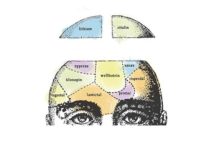A new analysis of FDA data, published on September 10th by the Milwaukee Journal Sentinel/MedPage Today, reveals the dangers of the common prescription of stimulant drugs for attention deficit/hyperactivity disorder (ADHD). The authors, John Fauber, Matt Wynn, and Kristina Fiore, found 19,000 complications from ADHD medications that were reported to the FDA—and they believe the actual number may be much higher than the reports indicate.
The most common drugs prescribed for ADHD include amphetamines such as Adderall and Vyvanse and methylphenidates such as Ritalin. All of these medications carry the potential for addiction and abuse.

In the early 2000s, the overprescription of painkillers was associated with a staggering jump in the amount of people abusing the drugs, leading to what is now termed the “opioid epidemic.” Although addiction and death due to the use of prescription painkillers have been covered extensively in the media, the abuse of stimulants prescribed for ADHD has received little attention.
Indeed, the anecdotal reports of college students using stimulants to study for their exams have received scattered attention. For instance, a 2013 study revealed eightfold increases in amphetamine levels in wastewater during final exams. However, this recent exposé illustrates the staggering impact of abuse of ADHD drugs and addiction to prescription stimulants.
The number of emergency room visits due to ADHD medications increased by 400% over the past seven years, paralleling the four-fold increase in recreational use of ADHD medications by adults between 2006 and 2014. The long-term effects of ADHD medications are not known, as rigorous studies follow patients’ use over the course of several weeks—months, at most—rather than the years that individuals will be consistently taking these medications. However, adverse events noted in the analysis of FDA data include fatal heart attacks and kidney failure, and adults taking these drugs are at much higher risk of severe side effects, according to the FDA data.
Experts have raised concerns about overdiagnosis of ADHD due to the recent expansion of diagnostic criteria. In the 2013 edition of the Diagnostic and Statistical Manual, Fifth Edition (DSM-5), the amount of symptoms required for a diagnosis of ADHD decreased to five from the more stringent six symptoms. Additionally, while previous diagnostic criteria required ADHD symptoms to be present before the age of seven, new criteria broadened the age range to 12.
Concerns have been raised that the broadening criteria would lead to the overprescription of stimulants. In fact, a recent study in the journal PLOS Medicine revealed that 78% of individuals on the panel revising these guidelines had financial ties to the pharmaceutical industry.
Critics have argued that ADHD diagnostic criteria are highly subjective and can resemble non-pathological human foibles. For instance, overlooking details, having difficulty with lengthy reading, being distracted, and being forgetful are all considered symptoms of ADHD. Strengthening this position are studies revealing that the youngest children in kindergarten are far more likely to receive a diagnosis of ADHD than older classmates. According to the CDC, in 2011, 11% of children had been diagnosed with ADHD, and two-thirds of children diagnosed with ADHD were prescribed medication.
Additionally, the ambiguity of the symptom criteria means that ADHD is quite easy to fake. In fact, a 2010 study revealed that this is already problematic—as many as one in four diagnoses of adult ADHD may have involved faked symptoms. While this study occurred before the diagnostic criteria were relaxed, that number will likely only increase.
The expansion of vague diagnostic criteria means it may be easy to misdiagnose ADHD or for patients to fake symptoms to obtain a prescription for recreational use. The latest evidence, the report concludes, points to a similar pattern of overprescription and abuse between the opioid epidemic and ADHD drugs.















—sigh— history repeats itself. I did a small project on America’s on again, off again affair with prescription stimulants. Its frightening, honestly. From day 1, there were some indications that amphetamines could increase hostility and possibly induce psychosis.
Of course…$$$ makes the world go round. In the early 30s, Smith Kline French (I think that was the grand-daddy of Glaxo Smith Kline) paid a famous psychiatrist to recommend benzedrine tablets for episodes of minor reactive depression characterized by fatigue. This company became “the house that speed built” by introducing benzedrine, dexedrine, and various “goof balls” that mixed an amphetamine (usually dexedrine, but sometimes desoxyn, the prescription version of methamphetamine) with a downer, usually a barbiturate, but sometimes a neuroleptic (ThoraDex, anyone?).
The FDA didn’t do much of anything until the 70s. Some “goofballs” remained on the market until the early 80s (Eskatrol–one part neuroleptic, one part dexedrine, was still popular when it was taken off the market. It was widely used as a diet pill.).
So, for a while….many doctors and psychiatrists were more cautious (to a point…). But, once again: $$$ talk. Minor reactive depressive episodes are now reconceptualized as “Adult ADHD,” etc. The practice of uppers for depression never entirely went away, although many prescribers switched to Ritalin, in large part due to the early ad campaigns for Ritalin.
And now…prescription uppers are once again ridiculously common in America. Even good ole Benzedrine is now back, under the brand name “Evekeo.” New name, same upper (now very $$$, btw). Evekeo retains the approval for 3 conditions the FDA deemed OK for amphetamines: 1) narcolepsy; 2) treatment of “exogenous obesity” when combined with other measures; and 3) treatment of disorders of attention (at the time the FDA handed down these rules, the 3rd indication was understood to be “rare.” Funny how things change…).
Uppers are often dangerous. “Speed kills,” kiddos. The medical community understood the dangers of uppers….until propaganda and $$$ were pumped into what amounts to a massive disinformation campaign (street meth=bad; expen$ive capsules your shrink prescribed=”medicine”).
History repeats itself, but I think its far worse this time around.
Report comment
Yes, GlaxoSmithKline was once Smith Kline & French, but the company’s mission to provide speed for the nation goes on.
Report comment
I don’t think these drugs have the potential for addiction and abuse. I think they are addictive and to prescribe them is abusive.
Report comment
Hear, hear!
Very well put.
Report comment
Calling “minor” depressive episodes adult onset ADHD is indeed a bad idea. Since the average shrink doesn’t do a real perceptual inventory before “diagnosing” his patients, enlightenment is liable to be an unpleasant treatment experience when the good man of medicine finds out his “depressed” patient is now unmistakably having a florid psychotic episode, thanks to his inappropriate treatment. (Is it time to cover up the blunder with psychiatric jargon?)
Report comment
I took ADHD drugs for years, they feel just like cocaine, I know cause I tried it.
I am not Mr Drug War, quite the opposite, I think adults should be able to do what they want but giving this stuff to little kids is just effed up.
I think parents should adjust the dosage for body weight and try their child’s pills before giving it to them.
Ya Mom and Dad , try 100mg of Vyvance for breakfast yourself first then decide if you want to give it to the kids every day. It might be fun, in my opinion the high is actually better then cocaine.
Report comment
Either that, or they’ll discover you’re part of a conspiracy to give them a speed jones.
Report comment
It always bugs me when they say things like “subjective or vague criteria make it easy to misdiagnose ADHD.” What they SHOULD be saying is that vague or subjective criteria make the ADHD diagnosis invalid and useless in planning any kind of “treatment,” because it is impossible from the diagnostic criteria to even determine if anything at all is wrong with the “patient,” let alone determine what could or should be done to help. How would you even judge what a “misdiagnosis” is if you don’t have any concrete criteria for the diagnosis in the first place?
Report comment
Because the diagnosis doesn’t match your belief system, it becomes a misdiagnosis.
Report comment
That is correct.
“CDH2 mutation affecting N-cadherin function causes attention-deficit hyperactivity disorder in humans and mice” Birk
Report comment
This is the sort of thing that happens when think of “ADHD” as an independent entity instead of a syndrome that can be induced by a multiplicity of factors. But that means you have to practice real instead of psychiatric medicine and have to know something about the different possibilities that could provoke the condition.
Report comment
Incorrect.
“Driven To Distraction” Hallowell
It is a great read. Powerful.
Report comment
Steve, You are almost there…..
Based on my ADHD hypothesis, you will never be able to Cure ADHD. Why?
Because ADHD BEHAVIOR is a CURE for a more SERIOUS PROBLEM.
Chet Bush
Report comment
The Stimulant Paradox revisited.
What is the rational behind giving, what appears to be a overstimulated child(typical ADHD behavior), a stimulant medication to calm them down? Answer: Stimulant medications are Dopamine Re-uptake Inhibitors. They temporarily hold the neurotransmitter Dopamine in the neuronal cleft, allowing for normal communication between different parts of the brain. But why does this allow the child to calm down? Because the stimulant medication is doing what the child’s BEHAVIOR has been attempting to do, INCREASE DOPAMINE LEVELS IN THE BRAIN.
ADHD kids are perfectly NORMAL KIDS. They do not have a disease or disorder. ADHD BEHAVIOR IS AN AUTONOMIC NERVOUS SYSTEM ATTEMPT TO MAINTAIN DOPAMINE HOMEOSTASIS. This all happens in the LIMBIC SYSTEM ( Unconscious Processes) and are kids are not aware of why they do these behaviors or how their behavior affects others.
ADHD IS A CURE.
Chet Bush
Report comment
“They do not have a disease or disorder. ADHD BEHAVIOR IS AN AUTONOMIC NERVOUS SYSTEM ATTEMPT TO MAINTAIN DOPAMINE HOMEOSTASIS.”
Then why is it so disruptive? If there is nothing wrong, why do they fail to pay attention so often? You know?
Report comment
https://www.healthline.com/health/adhd/evolution
Report comment
Incorrect.
Driven To Distraction” Hallowell
Read it
Report comment
That is correct.
“CDH2 mutation affecting N-cadherin function causes attention-deficit hyperactivity disorder in humans and mice” Birk
Report comment